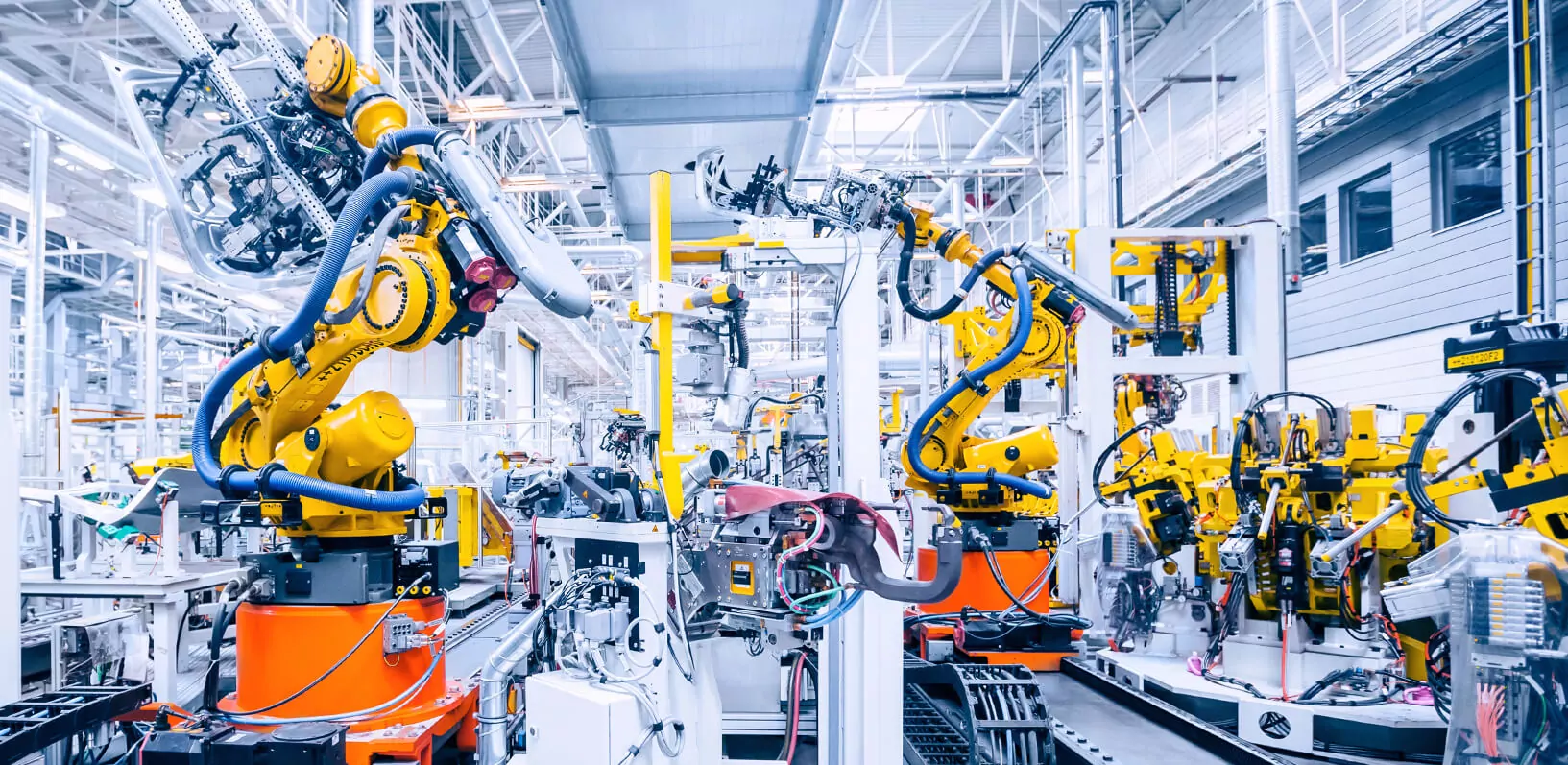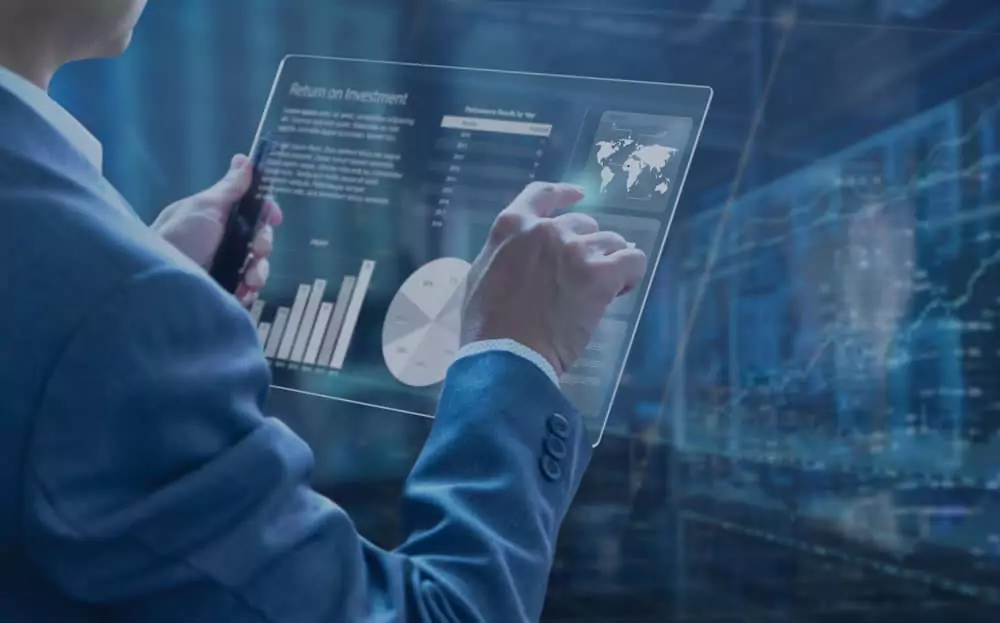The positive impact of technology on everyday life is spreading ever wider, yet still, some aren’t convinced about the validity of large-scale innovations. What may ultimately convince the doubters is the positive effects of digital healthcare transformation and the difference it makes globally (What is digital transformation?). The development of cutting-edge, accessible technologies leads to creating more efficient solutions and systems connecting medical professionals and patients. As a result, healthcare providers can cater to the huge demand of varied needs, addressing patients with better accuracy and efficiency.
In medical reality, practical applications of digital solutions are a step towards creating better care services and improving life quality for millions of patients annually. The stakes are high and definitely worth further development.
Read further to learn how healthcare benefits from digital transformation.

7 examples of digital transformation in healthcare
Artificial intelligence use cases
AI algorithms serve several purposes in the healthcare field, probably the most remarkable is their impact on drug development. Digital examination of proteins and predicting their properties enables faster development of medicines.
A great deal of medical procedures requires the use of non-invasive diagnostic measures, like X-rays, MRI, and CT scans, while others also call for invasive methods like biopsies, carrying associated risks. Artificial intelligence carries both, great accuracy in identifying abnormalities in assessed images and deduction based on provided materials, reducing the need for tissue samples. AI is already known for supporting cancer detection and early diagnosis of cardiovascular diseases.
One of the most remarkable examples of AI in diagnostics is the prodigy developed by Google Health and DeepMind, capable of outdoing radiologists in diagnosing breast cancer at early stages. The model trained on thousands of mammograms reduced over 9% of false negatives and nearly 6% of false positives, outperforming radiologists by approx. 11% and paving the way AI can be used in future cancer care. Algorithms are researchers’ allies in examining and battling other diseases as well, contributing to greater diagnostic accuracy and speed, e.g. predicting avoidable patient harm in acute kidney injury.
Artificial intelligence supports medical professionals also in mundane, everyday tasks, like the classification of clinical documents. Natural language processing enables speech and text recognition, which are used in extracting crucial information from clinical notes regarding patients, resulting in better insights on medical history and the progress of treatment.
Automation
Increasing implementation of automation technologies is beneficial for the drug manufacturing area, especially the production safety field, as shows the success story of MicroTechniX. Dedicated software allows microbiological image processing and analysis, leading to a precise examination of material in complex large-scale projects. Employing algorithms in microbiological studies enables efficient study of bacterial colonies and assessment of their features, creating foundations used in medication research laboratories.
In the broader sense, automation carries great potential for health service providers, reducing the risk of human errors, mistakes caused by fatigue or lack of training among personnel.
Processes such as patient discharge and follow-up can be successfully automated, reducing the paperwork and improving efficiency. Assigning patients to follow standardized care plans monitored automatically contributes to better consistency and success rates in further therapy. Access to patients’ daily routines enables medical personnel to intervene as soon as distortions in the process are noticed. Moreover, automation can help in addressing larger groups of patients as their needs are identified, reducing the time spent on individual approaches where it’s not necessary or reducing no-shows at the doctor’s office thanks to automated patient appointment reminders.
Telehealth
Telehealth enables medical professionals to provide care without in-person contact. The solution gained particular recognition in the pandemic times, allowing care providers to continue looking after their patients despite the isolation. Under the umbrella term, covering telecare and telemedicine, various services can be provided, including remote doctor consultations, health education, monitoring of vital signs (blood pressure, ECG). Solutions like the platform developed by Babyscripts in cooperation with Phillips offer digital patient management backed by data gathered through connected devices.
Patient portals
Online services provide patients with secure 24/7 access to personal health information, enabling tracking visits, test results, prescriptions, and contacting medical professionals. Portals improve digital communication between care providers and patients, necessary for the course of treatment. The solution helps to keep track of therapy, streamlining patient-doctors communication, gathering information at patients’ fingertips, and enabling the creation of tailor-made services.
From the service providers’ point of view, patient portals are a great aid in everyday patient care, relieving on-site staff from e.g. answering calls and emails, simplifying customer patient service, and resulting in time and money savings. Websites like MyHealthRecord enable patients to view and manage their health records, documents, necessary forms and appointments, along with requesting medications and refills or seeking advice on dosages and prescriber details.

Internet of Things in medical care
Using physical devices in medical care to gather and exchange data is crucial for treatment and general wellbeing. IoT supports medical professionals by collecting patient data, e.g. sleep monitors, blood pressure checks, capturing vital signs, remote biometrics scanners, and tracking drug efficiency. To harness the potential of health-supporting devices in Parkinson’s disease care, Pfizer and IBM established experimental research cooperation. The developed system uses connected devices for real-time, remote health measurements with a perspective for changing clinical trials in the future.
The huge role of IoT devices answers the challenges of monitoring executed in the traditional way, as not all indicators can be efficiently followed without modern technology. IoT devices also cover care in the broader sense, giving insights into medications refills, temperature monitoring in drug development, air quality, and drug effectiveness tracking.
Big data in medicine
Vast amounts of data change the face of modern medicine in areas such as discovering new drugs and treatments, disease research & prediction, omitting unnecessary doctor appointments, automating hospital procedures, and improving patient data sharing. The role of big data in modern medicine is unprecedented, arming healthcare professionals with new tools transforming the industry. Building individual patient profiles and predictive models help to overcome limitations in understanding diseases. Companies like Flatiron Health contribute to cancer research and better patient care by analyzing billions of data points, enabling deeper insights for doctors and researchers.
Challenges of aging societies
Global demographic shows the trend of population aging, which already requires a change in the patient approach. With the growing number of citizens aged 65 or older (the old-age dependency ratio, OADR), societies need to reflect on providing better elderly care, creating a sustainable, efficient system. The combination of the above-mentioned solutions, mostly IoT and telehealth, is a chance to deliver efficient care to the growing number of elderly citizens, potentially prone to exclusion.
Some solutions are particularly designed to answer these needs, creating a new category of gerontotechnologies, assisting the elderly in daily living. Particularly worth noting are intelligent assistive technologies (IAT), representing digital health applications aimed at the special needs of aging societies, offering additional support in the care of patients with age-related cognitive disabilities, caused by e.g. dementia.
Outlook for the future – the impact of tech in healthcare
Digitalization of healthcare is a chance for delivering better solutions and treatment to patients, but with many advantages come inevitable challenges. Security and privacy concerns regarding patient data and the technology itself hindered access to medical data, development restricted by financial restrictions, etc. The impact of technology in healthcare will be more and more noticeable and common, as future trends become reality.
The future is inseparably linked with digital healthcare technologies, as we entered the era of rapid changes fueled by the newest inventions and discoveries. While some may use technology as a way of cutting corners, the best approach is to think holistically and consider digital solutions as the path to improving the quality of care. A little over 200 years after the first stethoscope was invented, the global medical field wields 2 million various life-saving and wellness-improving devices and appliances. The shift resulting from the fourth industrial revolution brings new opportunities, and it’s the right time to fully benefit from the potential of digital solutions in delivering the best patient care possible.
Looking for a digital solution to support your healthcare enterprise? Try our free consultation to find out what we can do for you.
Read more:
Digital transformation in manufacturing
Digital transformation in banking and financial services
Benefits of digital transformation
How to measure digital transformation





